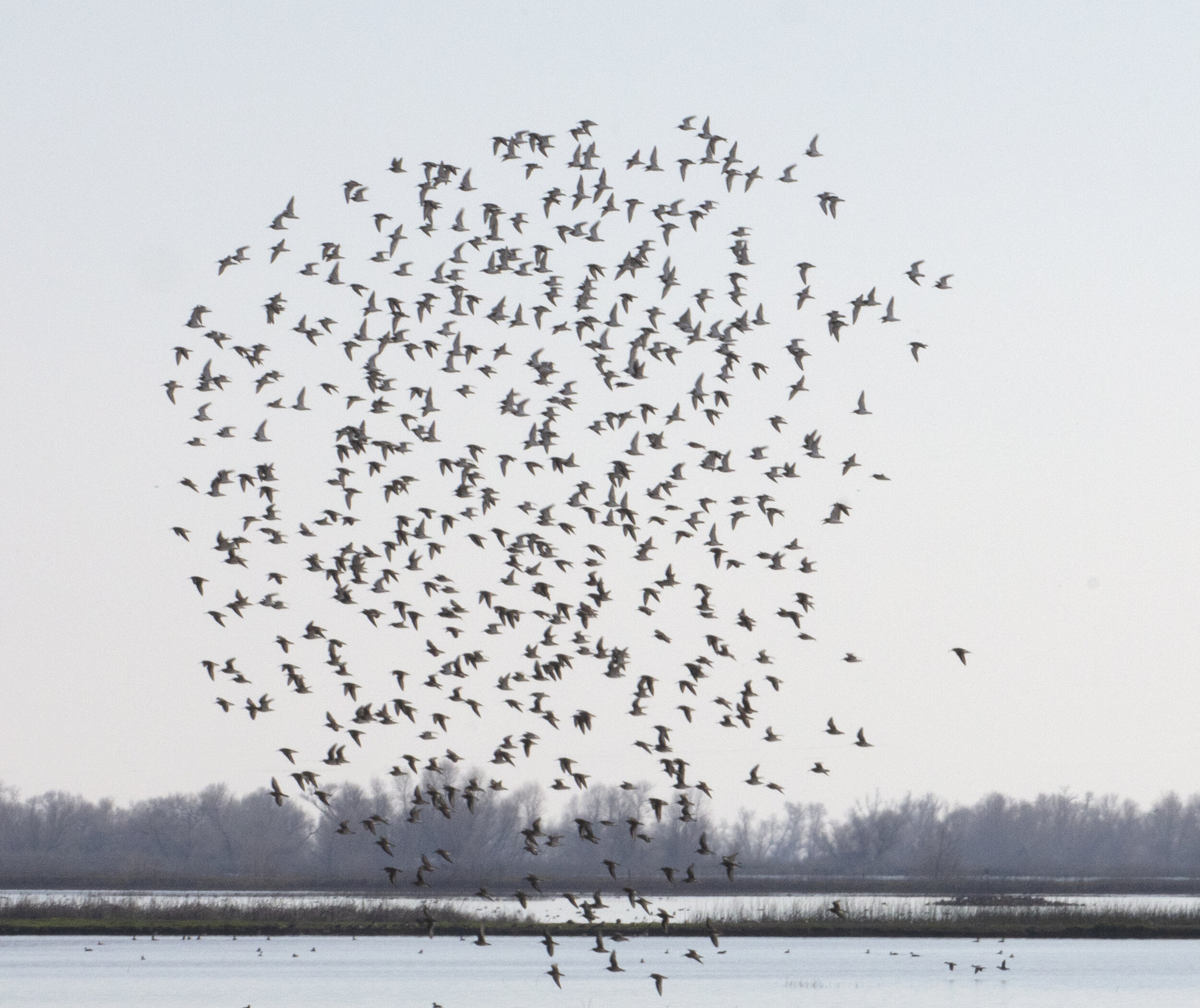Hawk at Sacramento National Wildlife Refuge : photo: Kathleen Goodwin
Art and Adventure: Trips Worth Taking
Richard Blair & Kathleen Goodwin
The sight of thousands of birds was our reward for spending Saturday in Sacramento National Wild Life Refuge and Sunday at the Colusa National Wild Life Refuge.
February 2-3, 2020. It was amazing to see a hundred thousand birds gathered in groups in the shallow waters of the bird refuge. Many birds migrate from the arctic to winter in the Cental valley of California. Before it became a agricultural powerhouse, the Cental valley flooded and was marsh-like, with rich soil brought down from the mountains. As the rivers were diked and the land converted to farms and orchards, the federal government created reserves so that birds had habitat to feed and rest, even to nest. The birds are now concentrated in these area and use the reserves for their survival. Visiting them involves driving very slowly in your car and not getting out of it so they don’t get scared and fly off. The auto route is a dirt levee road with water on one or both sides. Birds are everywhere, and not only do you see them but their songs and calls are a joy to hear. It is as if civilization has been stripped away and you are back in California when it was a great eco-paradise.
Interspersed with the thousands of Snow Geese were Northern Pintails, Northern Shovelers, Mallards, Egrets, Herons, Bitterns and many Coots. In the trees alongside the levees were various hawks. At Colusa, we spotted a Bald Eagle and a few White-faced Ibis, as well as some Avocets. There were many more species that we have not yet identified.
We spent Saturday night in the parking lot of the Colusa Casino which was very peaceful at night since its patrolled as casinos must be; it was a strong contrast to our day of bird-watching. (If anyone has any camping tips nearby the reserves please write back).
We drove up in the Sprinter van which actually gives you a good height for taking pictures. It is full of tripods, telephoto lenses, and lots of other art supplies plus a bed platform and small camping kitchen. We got the van from a skin surgeon hoping to set it up as a mobile surgery (which did not work out) so he sold it to us. But it is great as a mobile art studio - we call it the Magic Bus.
Photography tips: Bring the biggest telephotos lenses that you have or can rent. If you can get a window support to hold the camera steady it is a great help. Take extra batteries and a charger that works in the car. Shoot at high speeds and boost the iso so you freeze the movement of the bird and the movement of the camera rig. Stay still and wait for something to happen - patience has its rewards! Bug repellent can be helpful for gnats and little biters, though they were not too bad. If you see a great bird or scene, expose first and then adjust the camera for backup, otherwise you might miss a great shot.
Below are some highlights of our photography over those two days. We encourage you to visit the reserve - you will be in eco-heaven.
Flying Flock: Richard Blair
Great Heron: Richard Blair
Bald Eagle: Richard Blair
White-Faced Ibis: Kathleen Goodwin




